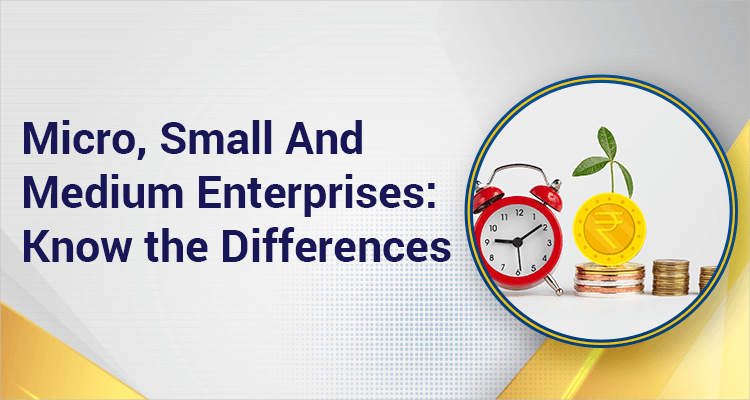Micro, Small And Medium Enterprises: Know The Differences

Small businesses comprise the backbone of the global economy. These small enterprises may not hog the limelight as public companies but they are seen as a critical component of nation building because they employ a large chunk of the workforce and make a significant contribution to their respective exchequers.
The Micro, Small and Medium Enterprises (MSME) sector has, therefore, been on the policy radar for decades in India. Besides providing employment to millions, the MSMEs also help in the industrialization of rural and backward areas and hence reduce regional imbalances.
The Micro, Small and Medium Enterprises Development (MSMED) Act was notified in 2006 to address policy issues affecting these enterprises, monitor the investment ceiling of the sector and enhance their competitiveness.
It provided the first-ever legal framework for an ‘enterprise’, both in manufacturing and service businesses. It also defined medium enterprises for the first time and integrated the three tiers of these enterprises.
MSMEs are also supported by government agencies in terms of procurement policies, lending from banks and other benefits.
Two years ago, the government retuned the definition of what comprises a micro, small and medium enterprise given the changing dynamics. The new definitions and categorization integrated the enterprises engaged in manufacturing and service sectors with revenue being a common factor as service sector companies need not meet the machinery investment criteria of the old days.
Micro-Enterprises
These are the lowest tier of small businesses. This category represents everything from a small bakery or take-away joint to an appliance servicing venture or a small guest house and a neighbourhood grocery shop owner. These comprise small businesses with only a handful of employees, typically less than 10, and a low capital base.
The micro-enterprises make up the bottom end of the business pyramid with a large number of very small-size ventures. More often that not these businesses produce goods or provides services for their local areas, though it is not unheard of where some of them also cater to national and international customers.
From a policy and regulatory perspective, a micro enterprise is one where the investment in plant and machinery or equipment does not exceed Rs 1 crore and annual revenue is less than Rs 5 crore.
Small Enterprises
These comprise the next tier of small enterprises that have gone past the initial struggle to scale up. They typically employ more than 10 people and yet the scale of operations is still small, with under 50 employees.
The regulatory body defines a small enterprise as one where the investment in plant and machinery or equipment does not exceed Rs 10 crore and revenues are less than Rs 50 crore.
Medium Enterprises
These are much more mature businesses that employ as many as 250 people. A medium enterprise is categorized as those where the investment in plant and machinery or equipment does not exceed Rs 50 crore and turnover is under Rs 250 crore.
Disclaimer : The information in this blog is for general purposes only and may change without notice. It does not constitute legal, tax, or financial advice. Readers should seek professional guidance and make decisions at their own discretion. IIFL Finance is not liable for any reliance on this content. Read more



